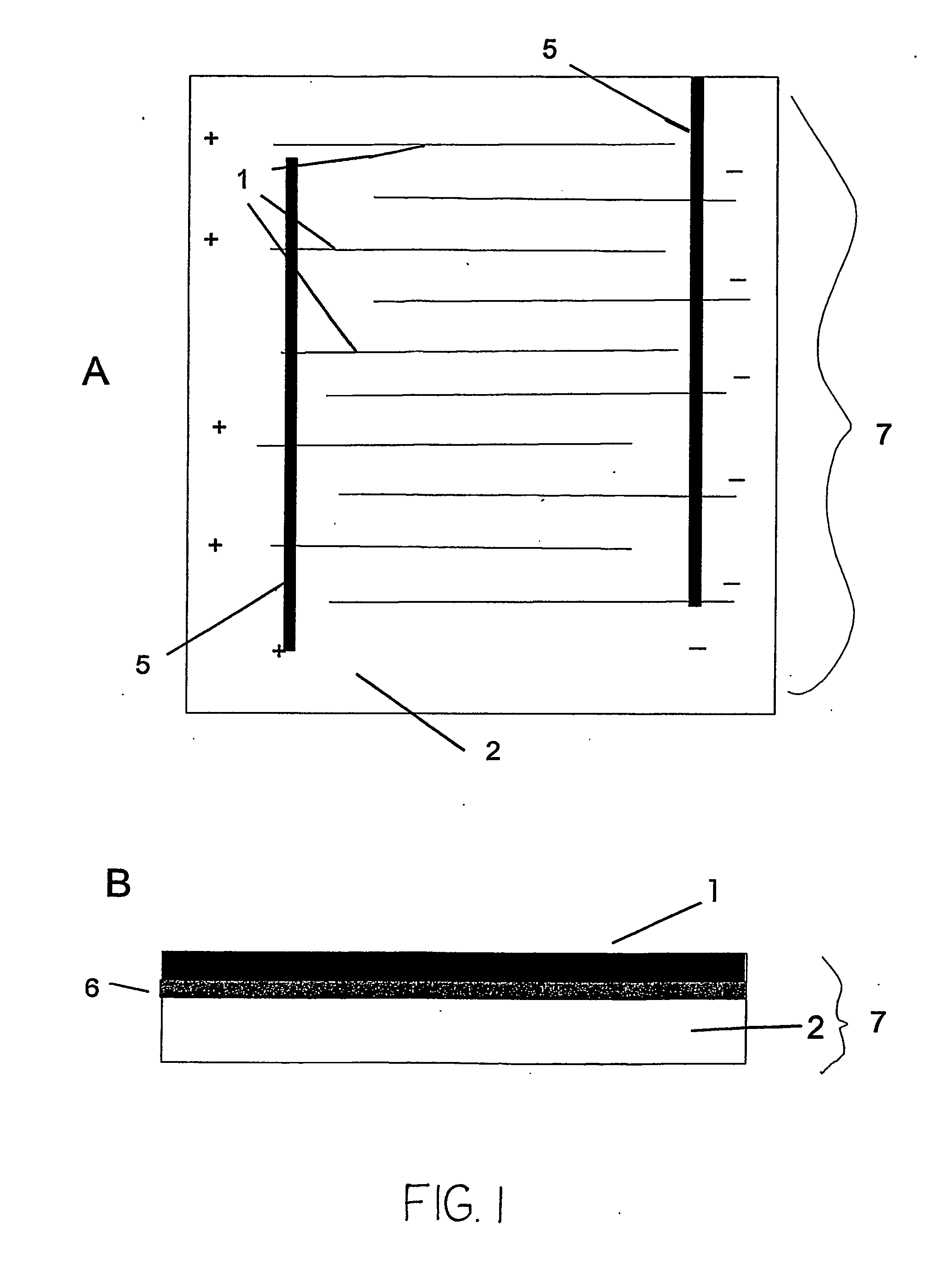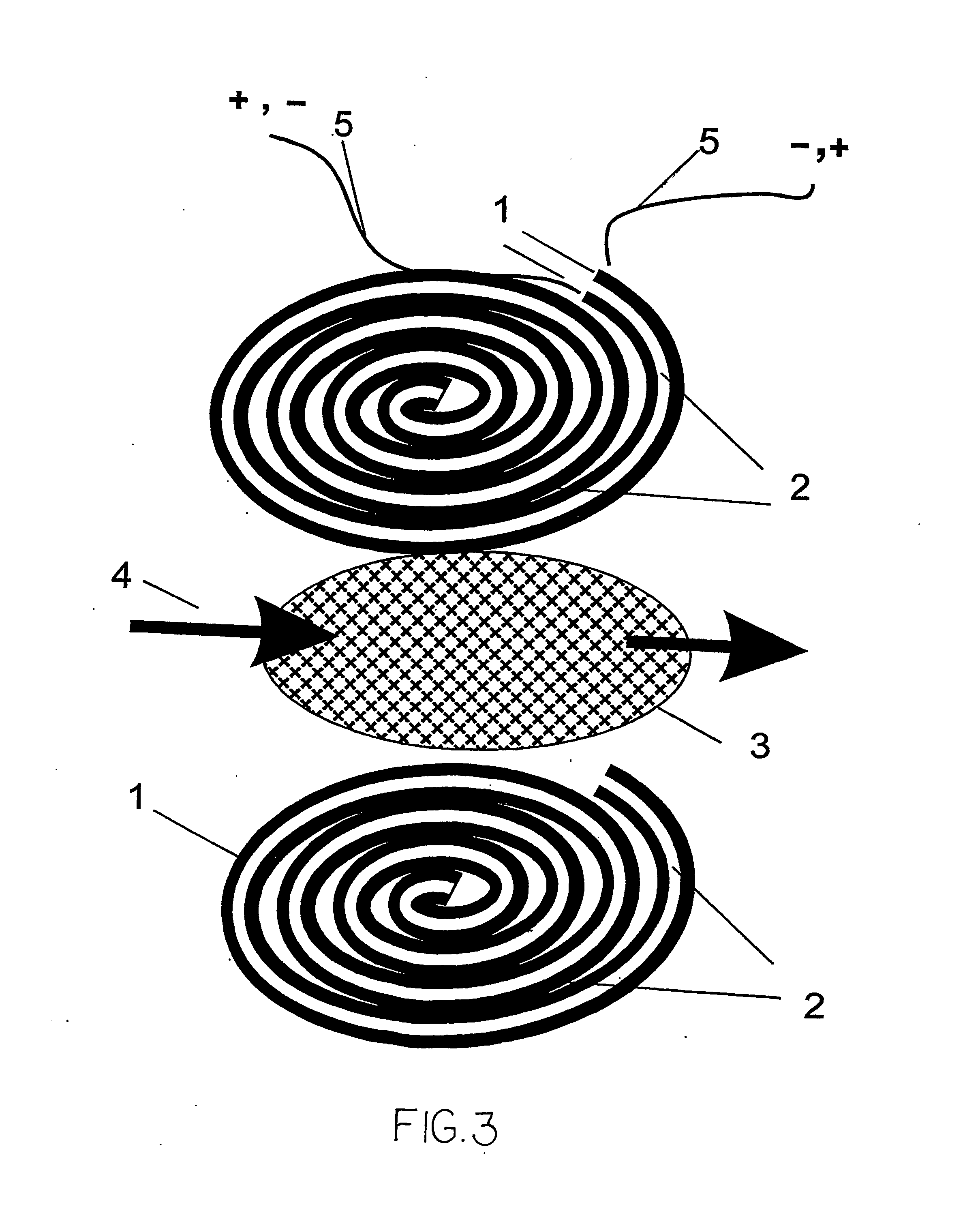Electrode array for use in electrochemical cells
a technology of electrochemical cells and electrode arrays, applied in the direction of wound/folded electrode electrodes, cell components, sustainable manufacturing/processing, etc., can solve the problems of increasing electrical leakage, undesirable effect, difficult to achieve proximity with purely opposing electrodes, etc., to reduce leakage and esr, and reduce series resistance
- Summary
- Abstract
- Description
- Claims
- Application Information
AI Technical Summary
Benefits of technology
Problems solved by technology
Method used
Image
Examples
example 1
[0070] A thin sheet electrode array, under 0.1 inches thick, preferably under 0.02 inches thick, with alternating electrodes such as shown in FIG. 1 or 2, is placed against a flow spacer. One or more electrode array layers are placed together with the flow spacer in any geometry used in flow-through capacitors or electrochemical cells. The electrode array and flow channel layers may be held together or compressed between end plates in order to form a flow-through electrochemical cell. Inlet and outlet means are provided exactly as in any other parallel electrode prior art electrochemical cell. The difference in the present invention is that electrodes in any prior art electrochemical cell geometry are replaced by electrode arrays of the present invention. A separate layer of current collectors may be placed underneath the electrode material.
example 2
[0071] Carbon powder PTFE electrodes of 0.01 inch thick are laminated with a graphite current collector layer and a 0.001-inch thick, nonporous, polymer spacer on one or both sides of the electrode / current collector. Arrays of holes 0.005 inches wide, spaced 0.010-inch center to center, are cut through spacer, electrode, and current collector layers in order to form a thin sheet electrode array. This array may be spiral wound, stacked flat against, or laminated for use with a separator used to form a flow channel and formed into an electrochemical cell or flow-through capacitor of any prior art geometry, where the electrode array of the present invention replaces the electrode used in the prior art.
example 3
[0072] Carbon powder PTFE electrodes of 0.01 inch thick are laminated with a graphite current collector layer and a 0.001-inch thick, nonporous, polymer spacer on one or both sides of the electrode / current collector. This is subsequently stacked or rolled into a jelly roll and heat treated or glued together in order to bind the layers together into a monolith. The monolith may be a rectangle, or cylinder, or any other shape. The monolith is subsequently skived diagonally or perpendicularly across the layers in order to form thin electrode sheet arrays of the present invention for use in electrochemical cells or flow-through capacitors.
PUM
 Login to View More
Login to View More Abstract
Description
Claims
Application Information
 Login to View More
Login to View More - R&D
- Intellectual Property
- Life Sciences
- Materials
- Tech Scout
- Unparalleled Data Quality
- Higher Quality Content
- 60% Fewer Hallucinations
Browse by: Latest US Patents, China's latest patents, Technical Efficacy Thesaurus, Application Domain, Technology Topic, Popular Technical Reports.
© 2025 PatSnap. All rights reserved.Legal|Privacy policy|Modern Slavery Act Transparency Statement|Sitemap|About US| Contact US: help@patsnap.com



